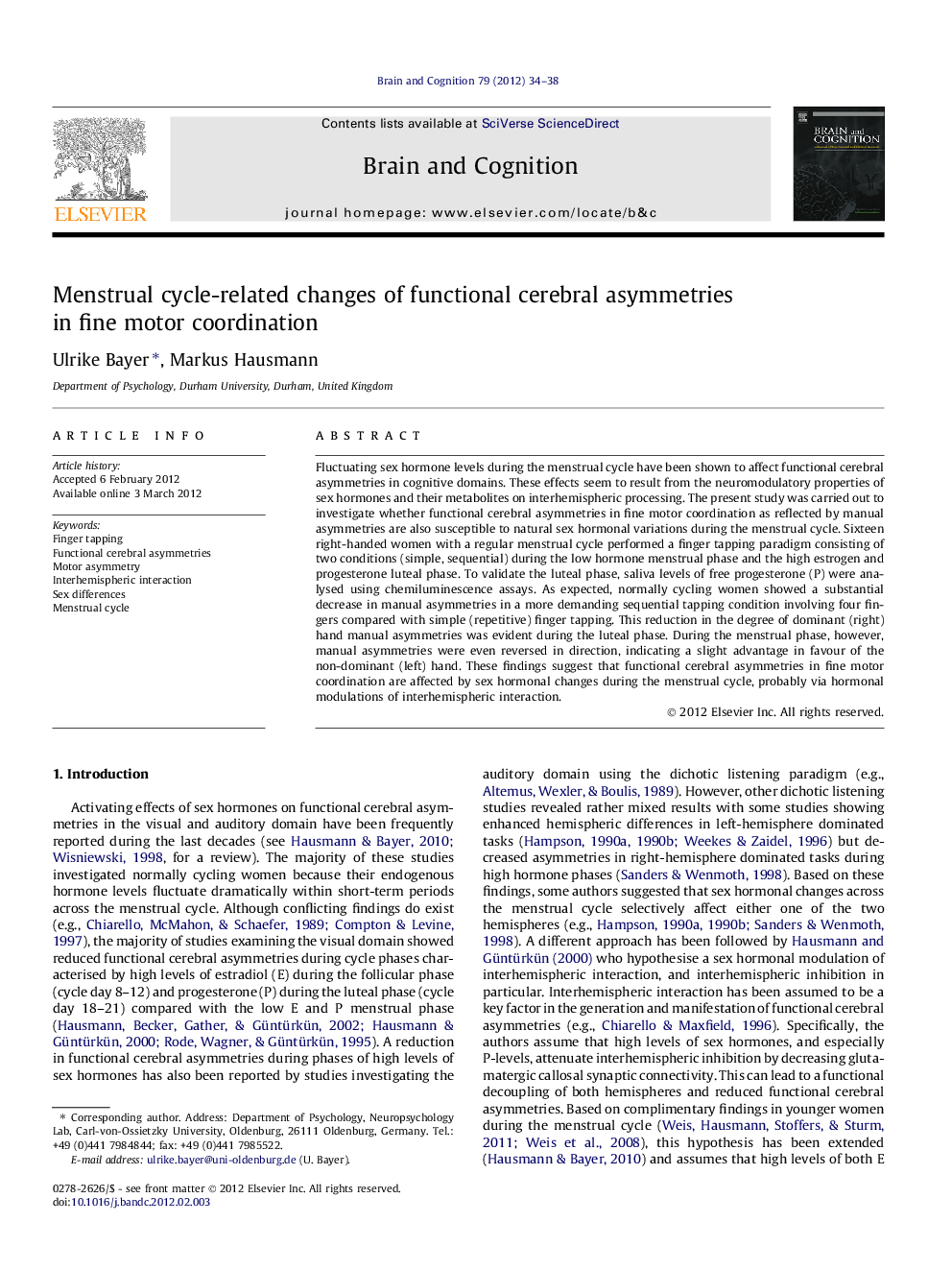| کد مقاله | کد نشریه | سال انتشار | مقاله انگلیسی | نسخه تمام متن |
|---|---|---|---|---|
| 924710 | 921260 | 2012 | 5 صفحه PDF | دانلود رایگان |

Fluctuating sex hormone levels during the menstrual cycle have been shown to affect functional cerebral asymmetries in cognitive domains. These effects seem to result from the neuromodulatory properties of sex hormones and their metabolites on interhemispheric processing. The present study was carried out to investigate whether functional cerebral asymmetries in fine motor coordination as reflected by manual asymmetries are also susceptible to natural sex hormonal variations during the menstrual cycle. Sixteen right-handed women with a regular menstrual cycle performed a finger tapping paradigm consisting of two conditions (simple, sequential) during the low hormone menstrual phase and the high estrogen and progesterone luteal phase. To validate the luteal phase, saliva levels of free progesterone (P) were analysed using chemiluminescence assays. As expected, normally cycling women showed a substantial decrease in manual asymmetries in a more demanding sequential tapping condition involving four fingers compared with simple (repetitive) finger tapping. This reduction in the degree of dominant (right) hand manual asymmetries was evident during the luteal phase. During the menstrual phase, however, manual asymmetries were even reversed in direction, indicating a slight advantage in favour of the non-dominant (left) hand. These findings suggest that functional cerebral asymmetries in fine motor coordination are affected by sex hormonal changes during the menstrual cycle, probably via hormonal modulations of interhemispheric interaction.
► We investigate whether motor asymmetries fluctuate during the menstrual cycle.
► Manual asymmetry (MA) was measured in women with low and high sex hormone levels.
► Increasing task demands numerically reverse MAs when sex hormones are low.
► When sex hormones are high, increasing task demands lead to symmetric performance.
► Change in MAs seems to be due to sex hormonal effects on transcallosal interaction.
Journal: Brain and Cognition - Volume 79, Issue 1, June 2012, Pages 34–38